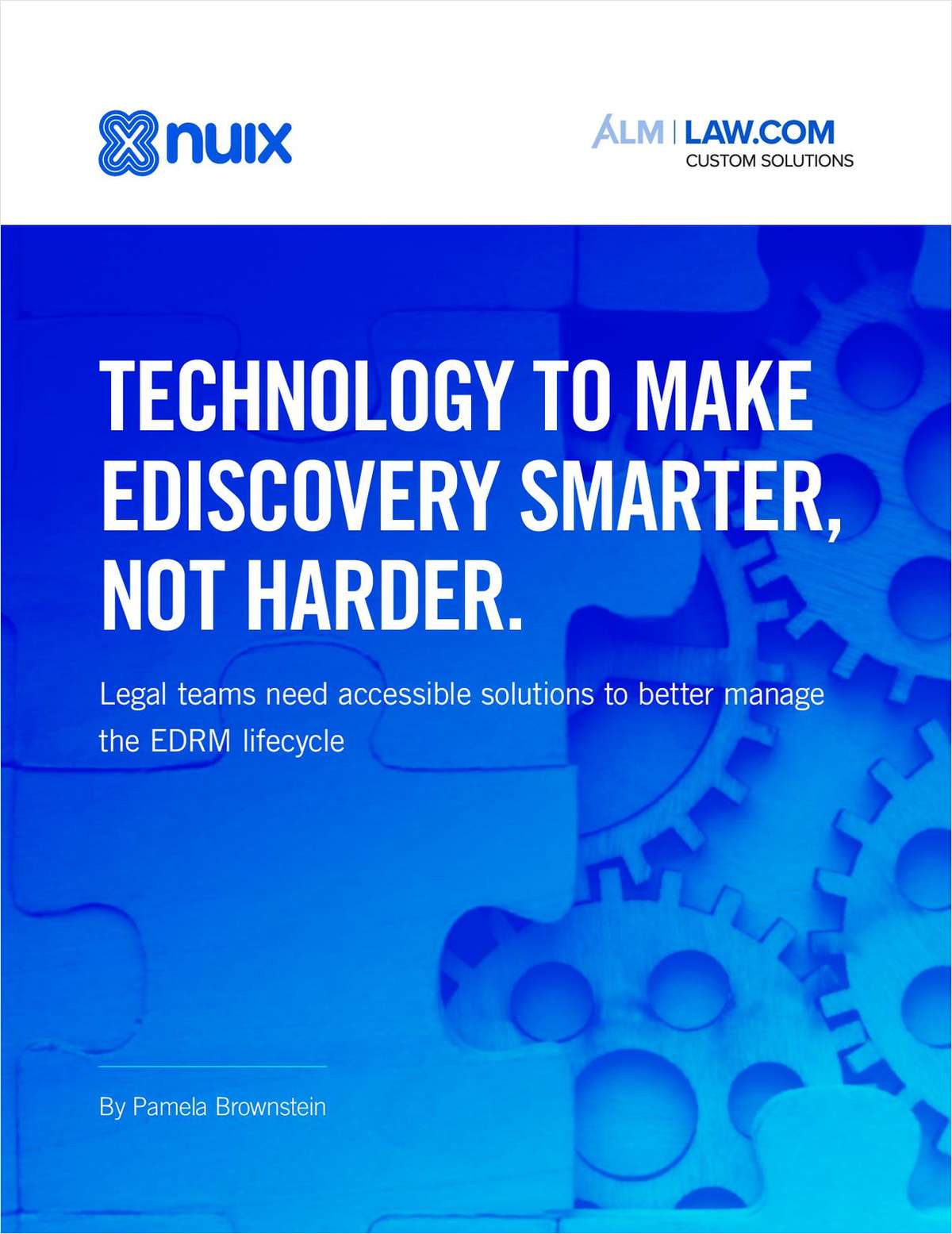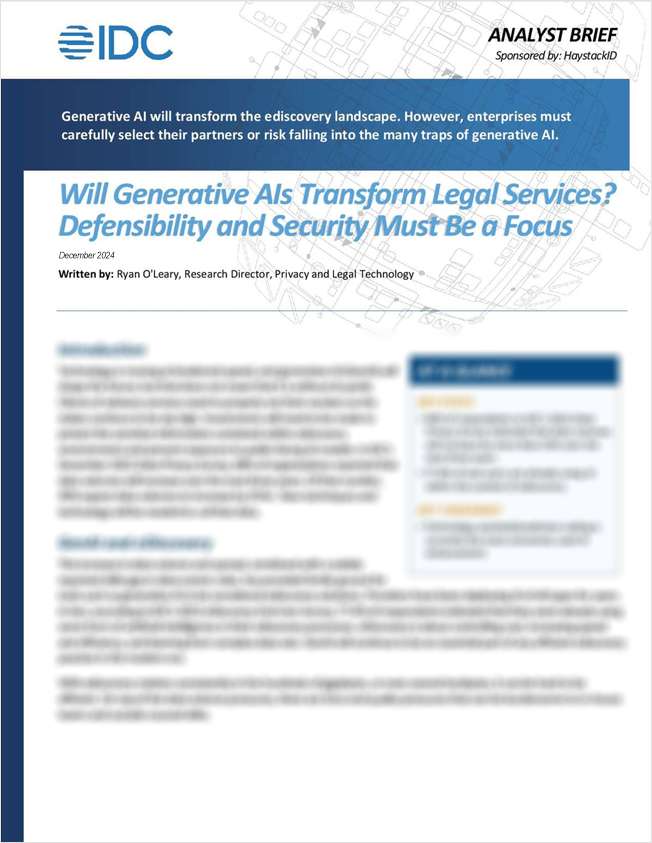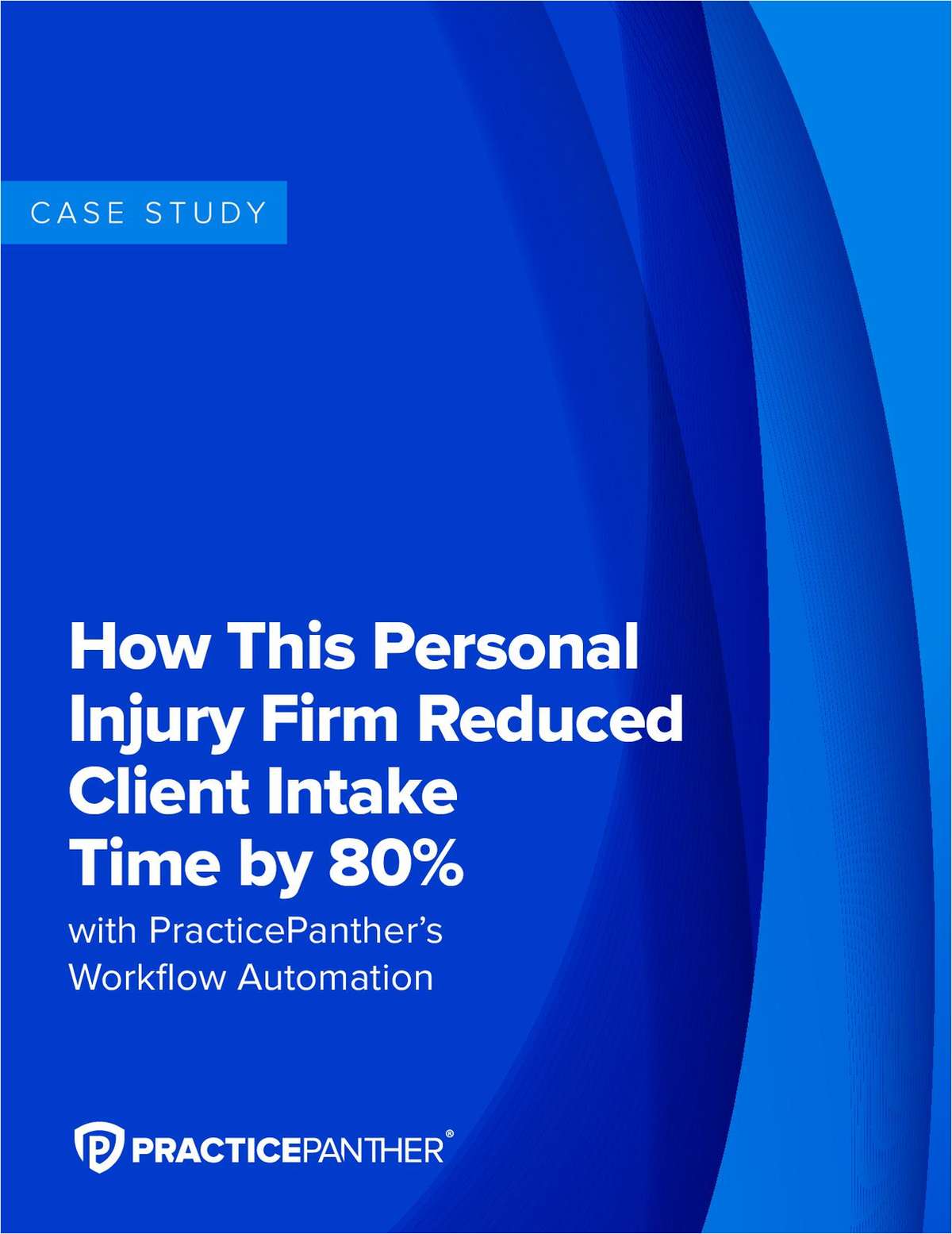Getting a Better View: Data Visualization in Legal Analytics
With the right visual representations of data, legal analytics tools can help quickly identify issues with the data and recognize potential patterns.
March 22, 2018 at 09:49 AM
4 minute read

Collecting, mining and analyzing data in the best way possible may seem like the holy grail of analytics, but the ability to make decisions on data is only as good as the ease with which it can be read. That is where good data visualization techniques come in. With the right visual representations of data through charts and graphs, today's best legal analytics tools can help the analyst quickly identify issues with the data, assess outliers, and recognize potential patterns.
“You can spend all the time in the world mining data, developing and administering a database that collects all of your information and have the best model, but if you present it to your users in a way that makes it impossible to consume and understand, it will quickly become an unused asset,” says Scott Springer, senior director at HBR Consulting. Most simply, visualization makes it easier to “discover” information, meaning it helps users identify trends in historical data, query data to quickly answer questions that used to require database experts and pinpoint outliers that exist in data sets.
There is a reason why Apple is one of the most successful companies in the world, he points out — it thinks first and foremost about how consumers will interact with its products. “In the age of mobility and web-based applications, law firm users are not going to accept antiquated data visualization techniques or products that are not easy to use,” he says.
As legal technology has become more advanced, data visualization has evolved significantly, he adds. “Just five years ago, the tools we have today that support self-service analytics and visualizations did not exist,” he says. The visualization landscape, he explains, is changing completely with platforms that require very little training and significantly smaller learning curves to roll out on a broad scale.
“It has been exciting to see law firms move from static budget reporting techniques like PDFs and spreadsheets to visuals that provide stoplight-like details and drill-down capabilities,” he says. In addition, these tools have fueled increased collaboration at law firms and bring a level of transparency that provides immediate value through tighter compliance to budgets, especially in areas like business development.
However, data visualization is a two-way street. You cannot have good visualizations without clean data, Springer explains, and you cannot have clean data without visualizations. “Otherwise, you will always find yourself searching for the needle in the haystack,” he says. “Just think about how difficult it would be to use platforms like Twitter or Facebook if tweets and posts came through in plain text in a single line on a spreadsheet – not convenient, easy or fun to use.”
To take optimal advantage of data visualization options within legal analytics tools, a close partnership with IT is a must. More and more firms, says Springer, are employing a dedicated support staff, and even UI or UX-trained employees, to support their data platforms.
“The failures that I have seen can most often be equated to lack of a long-term vision for support of these products,” he says. Regardless of how self-service a visualization claims to be, there will always be a learning curve and a premium on helping to curate the right information to the right people, he adds: “Given how fast this space is changing, it often requires either dedicated support and training resources or partnering with a third-party that can help you stay on top of the latest trends.”
Sharon Goldman has been covering B2B technology topics for more than 10 years, including for publications such as CIO.com, Adweek, Digital Insurance, Shopper Marketing and DMNews.
This content has been archived. It is available through our partners, LexisNexis® and Bloomberg Law.
To view this content, please continue to their sites.
Not a Lexis Subscriber?
Subscribe Now
Not a Bloomberg Law Subscriber?
Subscribe Now
NOT FOR REPRINT
© 2025 ALM Global, LLC, All Rights Reserved. Request academic re-use from www.copyright.com. All other uses, submit a request to [email protected]. For more information visit Asset & Logo Licensing.
You Might Like
View AllCushman Benchmark Survey (the “Sweepstakes”) Official Terms and Conditions
7 minute readTrending Stories
- 1Perkins Coie Lures Former Longtime Wilson Sonsini Tech Transactions Partner
- 2‘The Decision Will Help Others’: NJ Supreme Court Reverses Appellate Div. in OPRA Claim Over Body-Worn Camera Footage
- 3MoFo Associate Sees a Familiar Face During Her First Appellate Argument: Justice Breyer
- 4Antitrust in Trump 2.0: Expect Gap Filling from State Attorneys General
- 5People in the News—Jan. 22, 2025—Knox McLaughlin, Saxton & Stump
Who Got The Work
J. Brugh Lower of Gibbons has entered an appearance for industrial equipment supplier Devco Corporation in a pending trademark infringement lawsuit. The suit, accusing the defendant of selling knock-off Graco products, was filed Dec. 18 in New Jersey District Court by Rivkin Radler on behalf of Graco Inc. and Graco Minnesota. The case, assigned to U.S. District Judge Zahid N. Quraishi, is 3:24-cv-11294, Graco Inc. et al v. Devco Corporation.
Who Got The Work
Rebecca Maller-Stein and Kent A. Yalowitz of Arnold & Porter Kaye Scholer have entered their appearances for Hanaco Venture Capital and its executives, Lior Prosor and David Frankel, in a pending securities lawsuit. The action, filed on Dec. 24 in New York Southern District Court by Zell, Aron & Co. on behalf of Goldeneye Advisors, accuses the defendants of negligently and fraudulently managing the plaintiff's $1 million investment. The case, assigned to U.S. District Judge Vernon S. Broderick, is 1:24-cv-09918, Goldeneye Advisors, LLC v. Hanaco Venture Capital, Ltd. et al.
Who Got The Work
Attorneys from A&O Shearman has stepped in as defense counsel for Toronto-Dominion Bank and other defendants in a pending securities class action. The suit, filed Dec. 11 in New York Southern District Court by Bleichmar Fonti & Auld, accuses the defendants of concealing the bank's 'pervasive' deficiencies in regards to its compliance with the Bank Secrecy Act and the quality of its anti-money laundering controls. The case, assigned to U.S. District Judge Arun Subramanian, is 1:24-cv-09445, Gonzalez v. The Toronto-Dominion Bank et al.
Who Got The Work
Crown Castle International, a Pennsylvania company providing shared communications infrastructure, has turned to Luke D. Wolf of Gordon Rees Scully Mansukhani to fend off a pending breach-of-contract lawsuit. The court action, filed Nov. 25 in Michigan Eastern District Court by Hooper Hathaway PC on behalf of The Town Residences LLC, accuses Crown Castle of failing to transfer approximately $30,000 in utility payments from T-Mobile in breach of a roof-top lease and assignment agreement. The case, assigned to U.S. District Judge Susan K. Declercq, is 2:24-cv-13131, The Town Residences LLC v. T-Mobile US, Inc. et al.
Who Got The Work
Wilfred P. Coronato and Daniel M. Schwartz of McCarter & English have stepped in as defense counsel to Electrolux Home Products Inc. in a pending product liability lawsuit. The court action, filed Nov. 26 in New York Eastern District Court by Poulos Lopiccolo PC and Nagel Rice LLP on behalf of David Stern, alleges that the defendant's refrigerators’ drawers and shelving repeatedly break and fall apart within months after purchase. The case, assigned to U.S. District Judge Joan M. Azrack, is 2:24-cv-08204, Stern v. Electrolux Home Products, Inc.
Featured Firms
Law Offices of Gary Martin Hays & Associates, P.C.
(470) 294-1674
Law Offices of Mark E. Salomone
(857) 444-6468
Smith & Hassler
(713) 739-1250








